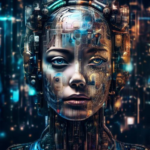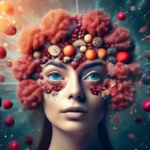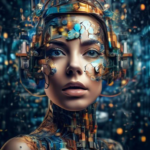Imagine uncovering an old, dust-laden photo album in your attic, with sepia-toned memories of ancestors who look like they walked straight out of a history book. The edges of these photographs have faded, and time has painted its melancholy strokes across each image. Now, imagine if you could breathe new life into these nostalgic relics, restoring them to their former glory with just a few clicks. Welcome to the future of preservation, where artificial intelligence isn’t just a buzzword—it’s a magic wand for reviving cherished memories.
In this article, we’ll embark on a journey through pixels and algorithms, exploring how to harness the potent capabilities of AI for image restoration. Whether you’re a seasoned professional or a novice eager to rejuvenate your family’s photographic heritage, this guide will support and empower you every step of the way. So, dust off those old photo albums, open your heart to a bit of digital wizardry, and let’s transform the past into a vividly restored present.
Table of Contents
- Understanding the Basics of Image Restoration
- Selecting the Right AI Tools for Your Needs
- The Power of Neural Networks in Restoring Photos
- Preprocessing: Setting the Stage for AI Magic
- Step-by-Step Guide to Using AI for Image Enhancement
- Common Pitfalls and How to Avoid Them
- Advanced Techniques for Professional-Level Restoration
- Evaluating and Refining Your Results
- Sharing Your Restored Images: Best Practices and Tips
- To Conclude
Understanding the Basics of Image Restoration
Restoring images involves a deep dive into the pixels that make up a picture and refurbishing what time, damage, or poor quality has marred. This process isn’t just about applying a filter; it’s about identifying the anomalies, such as scratches, noise, and faded colors, and correcting them algorithmically.
**Key Elements of Image Restoration**:
- Noise Reduction: Minimizing the random variations in brightness or color information.
- Deblurring: Correcting images that appear out of focus or have motion blur.
- Color Enhancement: Adjusting the saturation, brightness, and contrast to make the image vibrant and true to life.
- Scratch Removal: Identifying and correcting physical imperfections such as scratches and dust.
Utilizing **AI models** for these tasks involves training algorithms on vast datasets of both damaged and pristine images. These models learn to detect patterns of degradation and the correspondences in the pristine images to develop methods for accurate restoration. For instance, a neural network might be trained to recognize the general structure of a face, enabling it to restore finer details lost in a damaged photograph.
| Technique | Description |
|---|---|
| **Convolutional Neural Networks (CNNs)** | Effective in identifying and reducing noise and artifacts in images. |
| **Generative Adversarial Networks (GANs)** | Can generate realistic details to fill in missing or damaged parts of an image. |
| **Autoencoders** | Used for efficient feature extraction and noise reduction. |
By understanding these fundamental techniques, you can better appreciate the power and intricacy of the tools available for image restoration. Whether you’re touching up an old family photo or enhancing digital captures for professional use, the right approach can make all the difference.
Selecting the Right AI Tools for Your Needs
Choosing the best **AI tools** for enhancing your images can feel overwhelming with the myriad options available. The key is to identify your specific needs and match them with the tool that can best fulfill those requirements. Here are some pointers to help you make a well-informed decision:
- Identify the Scope of Restoration: Are you dealing with minor touch-ups like adjusting brightness and contrast, or do you require more intensive corrections like colorization and repairing damaged sections?
- Ease of Use: Some tools offer user-friendly interfaces ideal for beginners, while others cater to professionals with advanced features and customization options.
- Cost: Your budget can significantly influence your choice. Many AI tools offer varying pricing models, from free versions to premium modes with extensive features.
A good overview can be crucial for quick decision-making. Here’s a brief comparison to give you a headstart:
| Tool | Features | Skill Level | Price |
|---|---|---|---|
| PicsArt | Basic adjustments, filters, effects | Beginner | Free/Premium |
| Adobe Photoshop | Advanced editing, AI enhancements | Professional | Subscription |
| Deep Image AI | Upscaling, colorization, denoising | Intermediate | Pay-per-use |
**Integration and Compatibility**: It’s essential to check if the tool integrates smoothly with the software and devices you are already using. Compatibility with various file types, cloud storage solutions, and image backup services can greatly enhance your workflow.
Lastly, consider the **learning resources** and community support available for the tool you opt for. Tutorials, forums, and customer support can be invaluable, especially when handling complex restoration projects.
By carefully evaluating these aspects, you’ll be well on your way to selecting the perfect AI tool for your image restoration endeavors.
The Power of Neural Networks in Restoring Photos
Neural networks have revolutionized the field of image restoration, offering remarkable capabilities to bring old, damaged, or low-quality photos back to life. The essence of this technology lies in its ability to learn and recognize patterns, textures, and features from vast datasets, allowing it to reconstruct images with incredible accuracy. Whether you are an amateur photographer or a professional restorer, leveraging neural networks can transform your workflow and results.
**Why Neural Networks Excel at Image Restoration:**
- Pattern Recognition: Neural networks can identify intricate patterns and details that are often missed by traditional algorithms.
- Data Utilization: These models are trained on extensive datasets, enabling them to understand various image characteristics such as lighting, shading, and texture.
- Automation: They automate the restoration process, making it quicker and less labor-intensive while maintaining high quality.
| Neural Network Model | Key Feature |
|---|---|
| **Generative Adversarial Networks (GANs)** | Excels at creating high-quality restored images with realistic details. |
| **Convolutional Neural Networks (CNNs)** | Effective in enhancing image resolution and removing noise. |
**Real-World Applications:**
- Family Photo Albums: Restore old family photographs, preserving memories for future generations.
- Historical Archives: Reconstruct damaged historical images, making them accessible for educational and research purposes.
- Professional Photography: Enhance client images by removing imperfections and improving overall quality.
Getting started with using neural networks for photo restoration involves selecting the right software tools and models. Popular options include **Adobe Photoshop** with integrated neural filters, and open-source frameworks like **TensorFlow** and **PyTorch**. These platforms offer pre-trained models, simplifying the process for users with varying levels of expertise.
Preprocessing: Setting the Stage for AI Magic
Before diving into the immersive world of AI-driven image restoration, we need to prepare our digital canvas meticulously. Yes, preprocessing is the unsung hero that ensures our AI algorithms can perform their magic with precision. Think of it as setting up the stage before a grand performance – every detail must be picture-perfect.
**Why is preprocessing so essential?** It’s all about quality and accuracy. Here are the key steps you need to consider:
- **Noise Reduction**: Clean your images by removing unnecessary noise. This helps the AI to focus on the key features without distractions.
- **Resizing and Cropping**: Adjust the dimensions to create a uniform dataset. Consistent image sizes promote effective learning.
- **Color Normalization**: Standardize color profiles across images to ensure the AI doesn’t get confused by varied color signatures.
Let’s delve deeper with an example. Suppose you have a collection of vintage photographs that you want to restore. These images might come in various sizes, with different levels of wear and tear.
| Step | Action | Reason |
|---|---|---|
| Noise Reduction | Using filters to remove grain | Eliminates unwanted speckles and enhances clarity |
| Resizing | Scaling photos to a uniform size | Makes the dataset consistent for better model training |
| Color Normalization | Matching all images to a standard color profile | Prevents color-related distractions during restoration |
Once the images are preprocessed, the stage is set for the AI to work its wonders. These steps may seem tedious initially, but they’re the backbone of successful image restoration. Your AI can now focus solely on enhancing and reconstructing the images, delivering results that transform old, worn photos into vibrant memories.
Step-by-Step Guide to Using AI for Image Enhancement
Begin your journey into AI-powered image restoration with a clear plan of action. By following these systematic steps, you can transform old and damaged photos into sharp, vibrant masterpieces. Get ready to harness the power of artificial intelligence to breathe new life into your visual memories.
1. Choose the Right Tool:
Selecting an AI tool tailored for image enhancement is crucial. Popular options include:
- Topaz Gigapixel AI
- Adobe Photoshop with AI plugins
- DeepArt.io
2. Preprocessing Your Image:
Before diving into AI enhancement, ensure your image is prepped and ready. This might involve:
- Scanning physical photos at a high resolution
- Removing any dust or scratches using basic editing tools
3. Load and Analyze:
Once your image is prepared, load it into your chosen AI tool. Allow the software to analyze the image, identifying areas that need enhancement. This stage helps the AI understand the necessary adjustments for optimal results.
4. Apply Enhancements:
Leverage the predefined filters and settings of your AI tool to improve various aspects of your image. Key enhancements might include:
- Increasing resolution
- Reducing noise
- Enhancing colors and brightness
| Feature | Description |
|---|---|
| Resolution Boost | Enhances image size and definition without losing quality |
| Noise Reduction | Removes graininess for a cleaner look |
| Color Enhancement | Restores and vivifies colors to make images more vibrant |
5. Finishing Touches:
After applying AI enhancements, you might want to do some manual tweaking. Adjust contrast, saturation, and sharpness as needed to ensure the image looks its best. Use traditional photo editing tools in combination with AI to achieve a polished final product.
With these steps, you are well on your way to mastering AI-based image restoration. Each image holds a story, and with the help of AI tools, you can preserve and enhance these visual narratives for future generations.
Common Pitfalls and How to Avoid Them
Leveraging AI for image restoration can lead to remarkable results, but it’s vital to navigate common pitfalls. One major issue is **over-reliance on default settings**. Many AI tools come with preset parameters that may not be suitable for every image. It’s essential to customize these settings based on the specific needs of each project.
Another frequent error involves **ignoring the quality of the input image**. AI technology can enhance and restore images, but the input quality still significantly impacts the final output. Always use the highest resolution image available and avoid images with severe data loss or damage. If needed, employ pre-processing steps to clean up the image before running it through the AI model.
Here are a few **quick tips** for avoiding common errors:
- Evaluate Before You Automate: Examine the image for specific issues and adjust AI settings accordingly.
- Multiple Passes: Perform restoration in stages, rather than attempting to fix everything in a single run.
- Manual Touch-Up: Follow up AI restoration with manual edits for the best results.
It’s also crucial to **balance processing time and quality**. Some AI tools can produce excellent results quickly, but this might sometimes come at the expense of finer details. Experiment with different levels of processing and find a middle ground that works best for your needs.
| Common Pitfall | Solution |
|---|---|
| Default Settings Overuse | Customize parameters for each project |
| Poor Input Image Quality | Use high-resolution images and pre-process if needed |
| Ignoring Multiple Passes | Perform restoration in stages |
Advanced Techniques for Professional-Level Restoration
When diving into the world of professional-level restoration using AI, there are numerous advanced techniques that can dramatically enhance the quality and fidelity of your work. Leveraging state-of-the-art algorithms, you’ll be able to address common issues such as noise, color correction, upscaling, and more.
Using AI for Noise Reduction
AI-driven tools have revolutionized noise reduction. **Traditional methods** often blur details along with the noise, but **modern AI models** can distinguish between noise and fine details. Here’s how to get started:
- Experiment with several AI noise reduction tools to find one that suits your needs.
- Tweak the settings to balance between noise removal and detail preservation.
- Conduct a side-by-side comparison to judge the enhancement.
AI-Enhanced Color Correction
AI can significantly streamline the color correction process, offering suggestions and enhancements that might not be immediately obvious. Follow these tips for optimal results:
- Use AI tools to analyze the image and suggest color balance adjustments.
- Fine-tune the AI’s suggestions according to the artistic vision for your project.
- Consider blending AI-assisted adjustments with manual tweaks for a more natural look.
Popular AI Tools for Image Restoration
| Tool | Features |
|---|---|
| Denoise AI | Effective noise reduction with detail preservation. |
| Remini | Upscales images while enhancing clarity. |
| Palette.fm | Automatic colorization of black-and-white photos. |
Restoring Details and Textures
For restoring fine details and textures, AI-driven enhancement algorithms work wonders. Here’s what you can do:
- Scan your image at the highest possible resolution to capture all available data.
- Apply AI tools that specialize in texture enhancement to recover lost details.
- Use a layering approach to combine enhanced areas with the original to maintain a natural look.
Evaluating and Refining Your Results
After successfully applying AI for image restoration, **evaluating the quality** of your results is critical before finalizing the output. Rigorous assessment ensures the improvements meet your expectations and the project’s objectives. A range of techniques can be employed to scrutinize the restored images for better comparison and understanding.
One effective approach is to **compare the before and after results** side by side. This can be done by placing the original image next to the restored image, making it easier to spot enhancements and imperfections. Additionally, consider creating a slider or a fade-in effect that lets you overlay the restored image on the original, facilitating more dynamic analysis. A quick inspection checklist might include:
- Clarity: Assess if the image details are sharper and more defined.
- Color Accuracy: Check if the colors appear natural and vibrant.
- Noise Reduction: Ensure that any undesirable graininess has been minimized.
- Artifact Removal: Look for and confirm the elimination of any unwanted elements or distortions.
| Evaluation Metric | Description |
|---|---|
| PSNR (Peak Signal-to-Noise Ratio) | Measures the ratio between the maximum possible power of a signal and the power of corrupting noise. |
| SSIM (Structural Similarity Index) | Quantifies the perceived quality of images based on their structural information. |
| Visual Inspection | Manual assessment of image quality by a human observer, focusing on visual appeal and accuracy. |
Refining the results often involves iterating on the process based on your evaluations. **Fine-tuning AI models** by adjusting parameters and retraining on a more diverse dataset can lead to progressively improved outcomes. Don’t hesitate to experiment with different algorithms and techniques to discover what works best for your specific use case.
Lastly, getting **feedback from stakeholders or a peer review** can provide additional insights you might have overlooked. Different perspectives can be pivotal in identifying areas for improvement. Always aim for a balance between automated evaluation metrics and subjective human judgment to achieve the best possible restoration quality.
Sharing Your Restored Images: Best Practices and Tips
Once you’ve restored your images using AI, it’s time to share your masterpieces with the world! To make sure your hard work gets the attention it deserves, follow these best practices and tips for sharing your restored images effectively.
Optimize for Different Platforms: Each social media platform has its own requirements and best practices for sharing visual content. Consider the following dimensions for optimal display:
- Instagram: 1080 x 1080 pixels (square)
- Facebook: 1200 x 630 pixels (landscape)
- Twitter: 1024 x 512 pixels (landscape)
- Pinterest: 1000 x 1500 pixels (vertical)
Engaging Captions: Writing a captivating caption can make a significant difference in audience engagement. Here are some tips:
- Share the story behind the image.
- Explain the restoration process briefly.
- Use relevant hashtags to increase visibility.
- Ask questions to encourage comments and interaction.
Before and After Comparisons: Showcasing a before and after comparison can be incredibly powerful. Consider presenting them side by side, or use sliders to make the transformation more interactive. Here’s an example layout:
| Before | After |
|---|---|
 |
 |
Tagging and Credits: If you’ve used third-party tools or collaborated with others, give credit where it’s due. Tag the appropriate accounts and credit the tools involved in the restoration process. This not only supports the creators but also broadens your reach.
Consistency and Timing: Consistency is key in maintaining engagement. Create a content calendar that schedules regular posts at optimal times for your audience. Tools like Hootsuite or Buffer can help streamline this process.
To Conclude
As technology continues to advance, the possibilities for using AI for image restoration are endless. From enhancing old family photos to reviving damaged artwork, the power of AI is truly remarkable. So don’t hesitate to dive in and explore the amazing world of image restoration with AI. With a little creativity and a willingness to learn, you’ll be amazed at what you can achieve. Let your imagination run wild and see where this incredible technology can take you. The future of image restoration is bright, and with the help of AI, the possibilities are truly endless. So go ahead, unleash your creativity and watch as your images come to life like never before. Opportunities are waiting for you. So embrace the power of AI and embark on this exciting journey of image restoration. The sky’s the limit!































